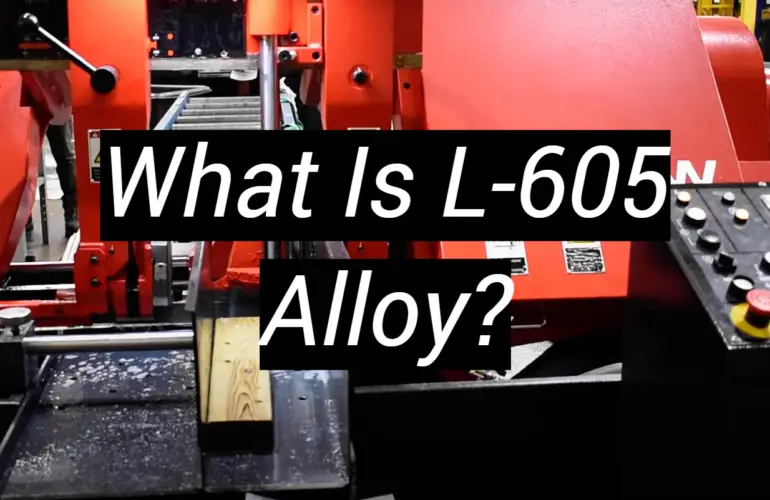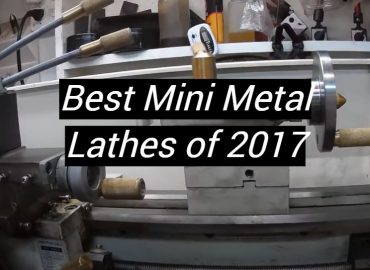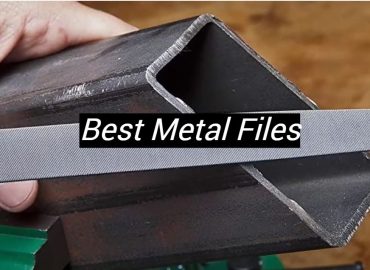The L-605 Alloy, also known as Haynes Alloy 25, is a remarkable nonmagnetic alloy composed of Cobalt, Nickel, Chromium, and Tungsten.It has exceptional high-temperature strength, making it ideal for applications that require tolerance to oxidizing atmospheres up to 1800°F (980°C) even with prolonged exposure. Additionally, this alloy exhibits excellent resistance to sulfidation, further enhancing its durability and reliability.
Moreover, this Alloy offers versatility in fabrication and forming, allowing for easy integration into various manufacturing processes using conventional techniques. Its adaptability has made it a preferred choice for cast components in numerous industries. Notably, this alloy has found extensive usage in gas turbine parts, furnace components, heat-treating equipment, marine hardware, and even in select applications within the chemical and environmental sectors.
With its unique combination of properties, the L-605 stands as a testament to the advancements in materials science, providing a reliable solution for demanding high-temperature and corrosive environments.
About alloy L-605
Others are famous for as Haynes 25, this alloy is renowned for its exceptional versatility and unique characteristics that make it highly sought after in numerous industries. Its remarkable ability to resist oxidation and sulfidation sets it apart, making it invaluable in areas where corrosion resistance is of utmost importance. Not only that, but its outstanding capability to withstand high temperatures makes it the ultimate choice for critical components in gas turbines, furnaces, and heat-treating equipment.
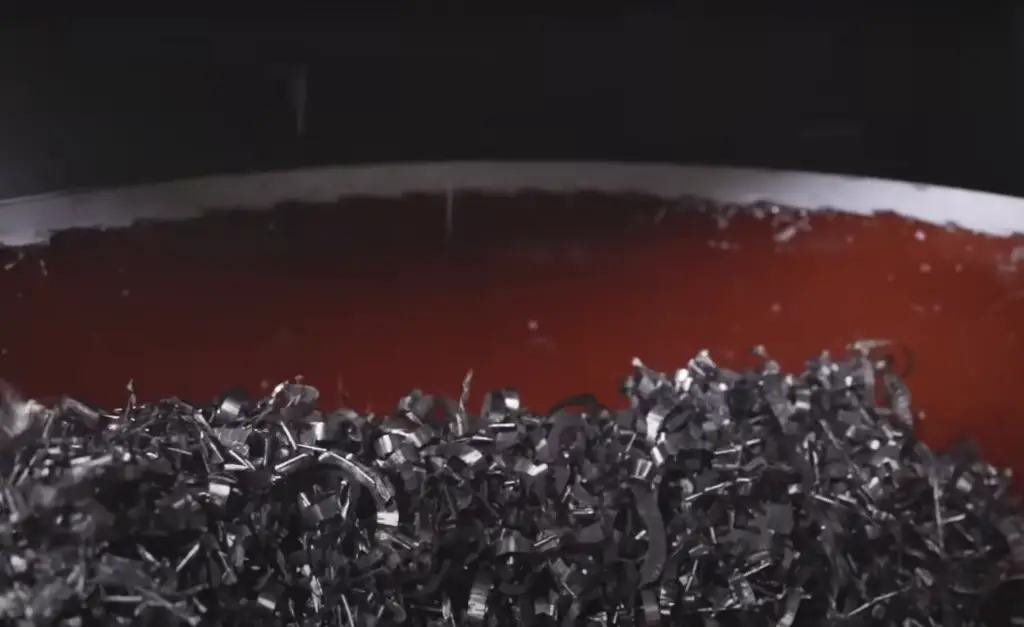
Beyond its impressive resistance properties, L-605 also boasts nonmagnetic attributes, further expanding its range of applications. This extraordinary alloy can be easily shaped using conventional methods, making it a preferred choice in various sectors. From marine hardware to the chemical and environmental industries, Alloy L-605 continues to be the go-to material, trusted for its reliability and performance. Its versatility knows no bounds, proving its worth time and time again.[1]
Chemical Composition of L-605
L-605 is a high-performance alloy with a unique composition that attributes to its powerful characteristics and broad applications. Its primary element is Cobalt, which accounts for around 49-52% of the total composition.
These elements further enhance the alloy’s mechanical properties, making it well-suited for high-temperature applications. Furthermore, Nickel forms up to 10% of the alloy and adds to its overall durability, ensuring long-lasting performance. In smaller amounts, Fe, Mg, and Si act as trace elements, each constituting less than 3% of the total composition. Despite their smaller quantities, these elements play a crucial role in refining the microstructure of the alloy, contributing to its remarkable high-temperature strength, exceptional stability to acidic substances, and substantial resistance to sulfidation. This unique blend of elements makes L-605 a highly reliable and versatile alloy for demanding industrial applications.[1]Physical Properties
This type of alloy is renowned for its exceptional physical properties, making it the preferred material in a wide range of demanding applications. With a dense structure boasting a density of 9.27 g/cm³, this alloy exhibits remarkable high-temperature strength, ensuring its mechanical properties remain intact even in extreme temperatures of up to 1800°F (980°C). Impressive, isn’t it?
But that’s not all. The L-605 takes durability to a whole new level, with a melting point of 2410°F (1321°C). This means it can withstand prolonged exposure to high-temperature environments without compromising its structural integrity. Talk about resilience!
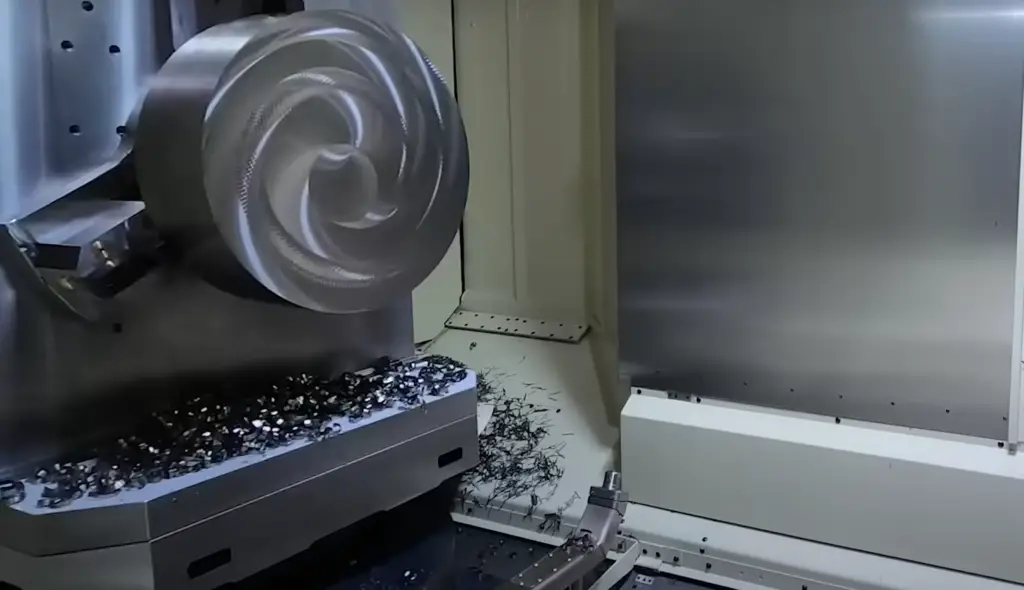
What’s more, this alloy showcases remarkable stability in response to temperature changes, thanks to its thermal expansion coefficient of approximately 11.2 µm/m·°C. This ensures that this alloy maintains its shape and performance even in the face of varying thermal conditions.
But wait, there’s more! The L-605 steel doesn’t just excel in strength and thermal properties. It also boasts outstanding hardness and tensile strength, with a typical yield strength of 450 MPa and an impressive elongation of up to 35% at room temperature. These superior mechanical characteristics make it an ideal choice for demanding applications that require both strength and flexibility.
And let’s not forget about its resistance to oxidizing environments and sulfidation. The alloy’s remarkable resistance to these corrosive elements further enhances its suitability for a wide range of applications, ensuring longevity and reliability in even the harshest conditions.
All in all, it’s clear that the L-605 alloy’s unique combination of physical properties sets it apart and contributes to its extensive range of applications.[1]
Mechanical Properties
The L-605 alloy is renowned for its exceptional mechanical properties, making it a highly versatile material with widespread applications across various industries. This alloy not only withstands high stress levels but also maintains its strength even under extreme temperature conditions, ensuring optimal performance in demanding environments. With a yield strength typically measuring around 45 ksi, the L-605 alloy exhibits remarkable tensile strength of up to 100 ksi, providing superior structural integrity. Moreover, at room temperature, it showcases an elongation of 35%, indicating excellent ductility and flexibility in its composition. When it comes to hardness, the L-605 alloy ranks impressively on the Rockwell C scale, typically falling within the range of 15-45HRC. This outstanding hardness contributes to its exceptional resistance to deformation and wear, ensuring longevity and durability in various applications. Additionally, the L-605 alloy possesses remarkable impact toughness, enabling it to withstand sudden applications of force or temperature changes without compromising its structural integrity. These exceptional mechanical properties make the L-605 alloy the material of choice for environments that demand durability, resilience, and stability, providing a significant advantage in various industrial settings.[2]
Thermal Properties
The thermal properties of the highly sought-after L-605 alloy are truly exceptional, making it a top choice across a wide range of industries. With an impressive thermal conductivity of approximately 12.3 W/m·K at room temperature, this alloy excels at facilitating efficient heat transfer in demanding high-temperature applications. Moreover, its specific heat capacity of around 0.460 J/g·°C highlights its remarkable ability to store and retain thermal energy effectively.
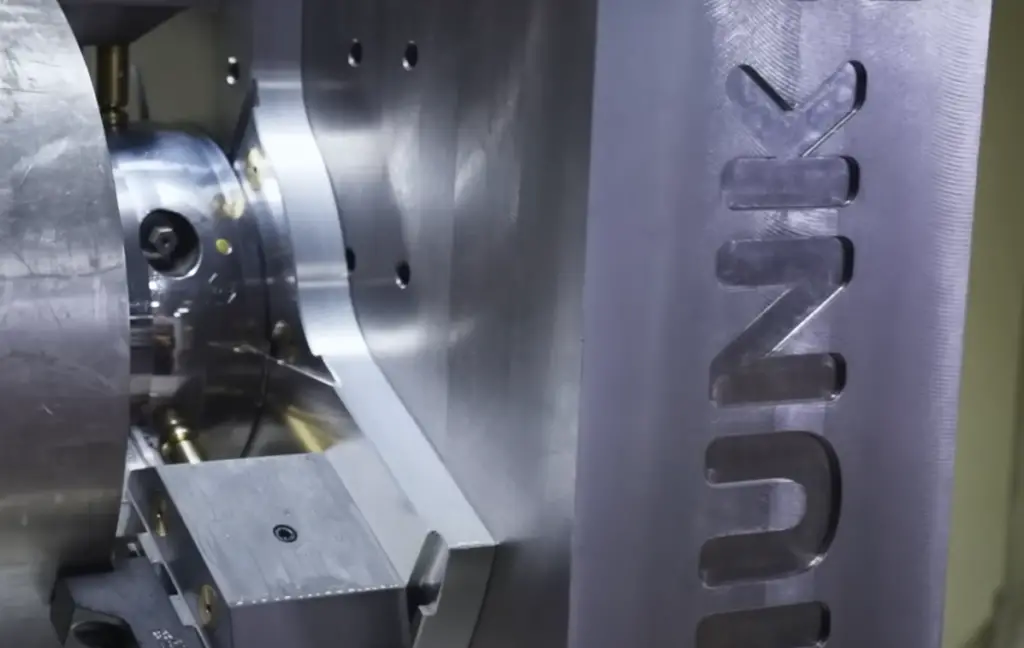
In addition to its impressive thermal conductivity and heat capacity, the L-605 alloy boasts an outstanding thermal expansion coefficient of about 11.2 µm/m·°C. This characteristic ensures that the alloy maintains excellent stability and structural integrity even when subjected to substantial temperature fluctuations. Furthermore, the alloy exhibits remarkable resistance to thermal fatigue, meaning it can retain its exceptional properties and performance even after repeated exposure to thermal cycles.
These exceptional thermal properties unquestionably position L-605 as an ideal choice for applications requiring exceptional resistance to high temperatures and remarkable thermal stability.
Heat Treatment
The L-605 alloy, known for its remarkable mechanical properties and wear resistance, can be further optimized through an effective heat treatment process.
To begin, the alloy undergoes solution annealing within a precise temperature range of 2150°F to 2250°F (1177°C – 1232°C). This high-temperature treatment eliminates any residual stresses and homogenizes the alloy’s composition. The next critical step involves rapid air or water quenching, which locks in the desired microstructure and prevents the formation of unwanted phases.
To achieve enhanced hardness, the L-605 alloy can also undergo an aging treatment. This additional step involves heating the material at a lower temperature range of approximately 800°F to 1200°F (427°C – 649°C) for an extended period, typically lasting several hours. The alloy is then cooled in air to complete the process. During aging, secondary phases precipitate within the alloy, further increasing its hardness and wear resistance.
It is important to note that the specific heat treatment process may vary depending on the final application of the material and the specific property enhancements required. Adhering to the recommended heat treatment guidelines ensures optimal performance and durability of the L-605 alloy in various industrial applications.[1]
Applications
The L-605 alloy, known for its exceptional physical, mechanical, and thermal properties, has garnered widespread adoption in multiple industries. Its remarkable resistance to high-temperature oxidation and sulfidation has made it indispensable in aerospace applications. Specifically, it is extensively employed in manufacturing combustion chambers, afterburner parts, and turbine engine components, ensuring optimal performance and reliability.
Moreover, the medical field benefits from the biocompatibility of L-605, enabling its utilization in the production of surgical implants and artificial heart valves. This not only enhances patient outcomes but also underscores the alloy’s versatility and adaptability.
Not limited to aerospace and medical domains, L-605 also demonstrates its mettle in industrial settings. Its high-temperature stability and resistance to wear make it an ideal choice for structural components in industrial furnaces and heat-treating equipment, ensuring longevity and efficiency.
Furthermore, the exceptional strength and high-temperature resistance of L-605 alloy lend themselves to the manufacturing of high-speed tools and hot extrusion dies. This allows for increased productivity and precision in various industrial processes.
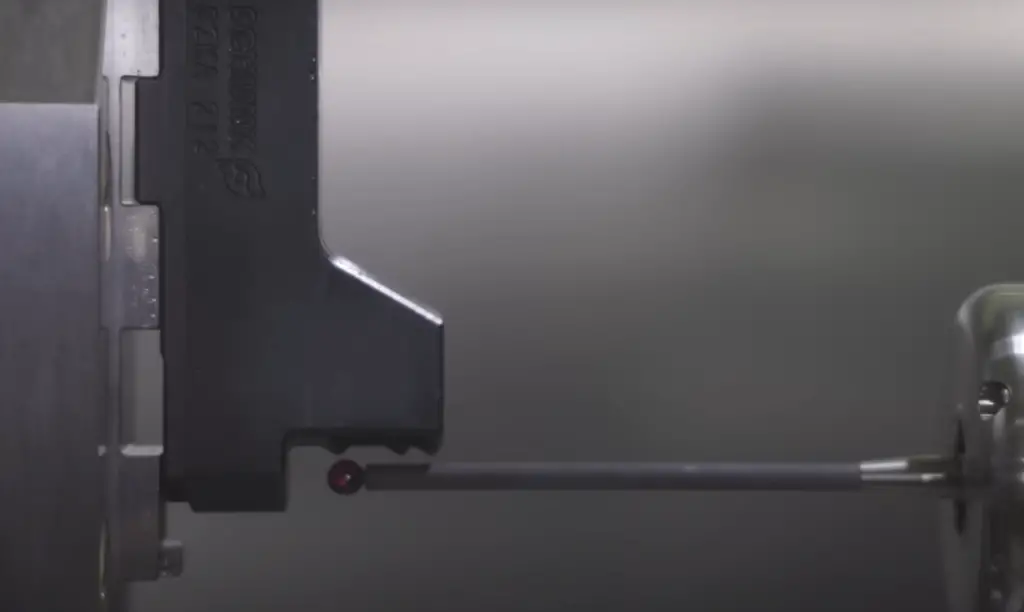
In summary, the L-605 alloy’s versatility, robustness, and ability to excel in demanding applications make it a material of choice across a wide range of industries, where reliability, performance, and longevity are paramount.[3]
FAQ
What is L605 made of?
The L-605 alloy, commonly referred to as Cobalt L-605, is a remarkable material renowned for its exceptional properties and versatility in a wide range of high-stress and high-temperature applications. Composed primarily of Cobalt, Chromium, and Tungsten, this non-magnetic, high-strength superalloy exhibits unparalleled performance under extreme conditions.
The majority of the alloy consists of Cobalt, which is responsible for its impressive high-temperature strength. It forms the foundation for the alloy’s outstanding durability and reliability, making it an ideal choice for demanding environments. Chromium and Tungsten, present in significant amounts, further enhance the alloy’s resistance to oxidation and sulfidation, ensuring long-lasting performance even in harsh conditions.
In addition to Cobalt, Chromium, and Tungsten, Nickel is another essential component of the L-605 alloy. Its presence contributes to the overall durability of the material, enhancing its resistance to wear and corrosion. Furthermore, small quantities of Iron, Manganese, and Silicon are also present, each playing a crucial role in enhancing the alloy’s physical and mechanical properties.
This unique combination of elements gives the L-605 alloy its well-deserved reputation as a versatile and robust material. Its ability to withstand extreme temperatures, resist oxidation and sulfidation, and maintain exceptional strength and durability make it an invaluable choice for various industries and applications. Whether it’s aerospace, power generation, or any other field that demands superior performance, the L-605 alloy stands as a reliable and trusted solution.
What is the hardness of L605 material?
The L-605 alloy, renowned for its remarkable hardness, stands out as an exceptional choice for high-stress applications. This exceptional hardness directly contributes to the alloy’s outstanding resistance to wear and deformation, ensuring optimal performance even in the most demanding conditions.
In metallurgical terms, hardness refers to a material’s ability to withstand indentation or scratching. The L-605 alloy’s hardness is commonly evaluated using the Rockwell C scale, a standardized method for measuring metal hardness. Typically falling within the range of 15-45HRC, the L-605 alloy exhibits exceptional resistance to deformation and wear when subjected to force. It is important to note that the exact hardness may vary depending on factors such as heat treatment processes.
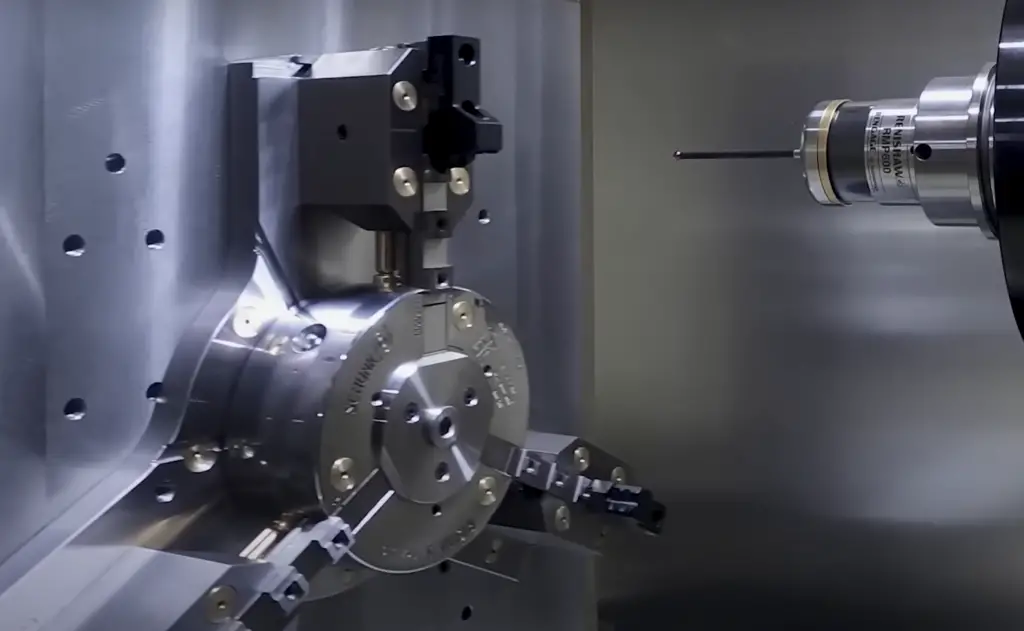
The impressive hardness value of the L-605 alloy serves as a testament to its exceptional durability and reliability for a wide range of industrial applications. With its unparalleled resistance to wear and deformation, the L-605 alloy is an ideal choice for industries that require high-performance materials in challenging environments.
Is L605 magnetic?
L-605, also known as Cobalt L-605, is a high-performance alloy that exhibits remarkable non-magnetic properties. This exceptional characteristic is primarily attributed to its abundant cobalt content, which inherently renders it non-magnetic. Additionally, the alloy’s composition, including elements like Chromium and Tungsten, has minimal impact on its magnetic behavior. This unique combination of elements ensures that L-605 retains its non-magnetic property, even after undergoing various heat treatments and mechanical working processes. This inherent non-magnetic nature adds an extra layer of versatility to the alloy, making it particularly suitable for applications where magnetic interference could pose a concern. With its exceptional non-magnetic properties, L-605 stands as a top choice for industries seeking reliable and corrosion-resistant materials that can withstand challenging environments without compromising performance.
Is L605 cold worked?
Yes, Cobalt L-605, can be cold worked to enhance its mechanical properties, such as hardness and strength. Cold working is a process that involves deforming the alloy at room temperature, hence the term “cold”. This deformation can be induced through various methods, including rolling, drawing, or stretching.
When L-605 undergoes cold working, the dislocation density within the alloy increases, leading to an improvement in its hardness and strength. This is due to the formation of more dislocations, which hinder the movement of dislocations and impede the plastic deformation of the material. As a result, the alloy becomes more resistant to deformation and exhibits enhanced mechanical properties.
However, it’s important to note that extensive cold working can make the material more brittle and decrease its ductility. This is because the increased dislocation density can lead to the formation of grain boundaries and other defects, which act as sites for crack initiation and propagation. Therefore, the degree of cold working applied to L-605 is often tailored based on the specific requirements of the end application, balancing the desired mechanical properties with the need to maintain sufficient ductility and toughness.
In summary, cold working is a valuable technique for improving the mechanical properties of L-605, but careful consideration must be given to the extent of cold working to ensure a balance between enhanced properties and the material’s overall performance in real-world applications.
What is L605 equivalent to?
The L-605 alloy, also known as Cobalt L-605, exhibits remarkable properties due to its unique chemical composition and outstanding performance characteristics. In addition to its exceptional resistance to oxidation and sulfidation at high temperatures, this cobalt-based superalloy offers superior strength and hardness, making it highly suitable for a wide range of applications in aerospace, medical, and industrial settings.
When considering equivalent materials, it is worth noting that there are several options available that closely resemble L-605 in terms of chemical composition and performance. Two notable examples include Haynes® 25 and Udimet L-605®. These materials exhibit similar properties to L-605, with slight variations in their specific contents. However, their comparable characteristics allow for the substitution of one alloy for another in many applications.
Minor differences in properties and performance may exist, necessitating a careful analysis to ensure optimal suitability. By considering these factors, engineers and designers can confidently select the most appropriate alloy for their intended use, ensuring optimal performance and reliability.What does cold working a material do?
Cold working, also known as cold deformation, is a mechanical process that involves shaping and deforming a material at room temperature. This process aims to improve and enhance the mechanical properties of the material. When a material like L-605 alloy undergoes cold working, its hardness and strength experience a notable increase. This can be attributed to the rise in dislocation density within the material, which occurs as a result of the mechanical stress induced by processes such as rolling, drawing, or stretching.

In addition to the significant enhancement of strength and hardness, cold working can also have positive effects on the material’s surface finish and dimensional accuracy. The process can help refine the surface texture, resulting in a smoother and more polished appearance. Moreover, it can contribute to improved dimensional precision, ensuring that the final product meets specific requirements and tolerances.
However, it is crucial to consider the potential trade-off between the benefits of cold working and the material’s ductility. Extensive cold working can lead to a decrease in ductility, making the material more susceptible to brittleness. Therefore, the extent of cold working is often carefully controlled and optimized based on the specific requirements and intended application of the material.
By understanding the principles and effects of cold working, engineers and manufacturers can tailor the process to achieve the desired balance between enhanced mechanical properties, surface quality, and dimensional accuracy. This careful control and consideration of cold working parameters play a vital role in meeting the specific needs of various applications and ensuring the overall success of the material.
Useful Video: L-605 – AMS 5759 – L605 – ROUND BAR – SHEET – STRIP – AMS 5537 – Cobalt Alloy – What is L605?
Conclusion
The L-605 or Cobalt L-605 alloy, renowned for its exceptional characteristics, is composed of a unique blend of elements such as Cobalt, Chromium, Tungsten, and Nickel. These elements contribute to its outstanding properties, including high-temperature strength, remarkable resistance to oxidation and sulfidation, and non-magnetic behavior. Notably, its hardness, measured on the Rockwell C scale, and its ability to be cold worked, render it an ideal material for high-stress, high-temperature industrial applications.
When exploring alternatives, comparable materials like Haynes® 25 and Udimet L-605® exhibit similar traits, offering viable options based on specific application requirements. However, the versatility and robustness of L-605 undoubtedly position it as a material of choice for a wide range of demanding applications, spanning from aerospace to medical industries.
As with any material, achieving a balance between hardness and ductility is crucial, along with careful consideration of the specific application requirements when selecting and processing this alloy. By doing so, the full potential of L-605 can be harnessed, ensuring optimal performance and reliability in diverse industrial settings.
References:
- https://www.techsteel.net/alloy/cobalt/l-605
- https://www.fwmetals.com/materials/high-performance-alloys/l-605/
- https://www.hpalloys.com/alloys/l605

